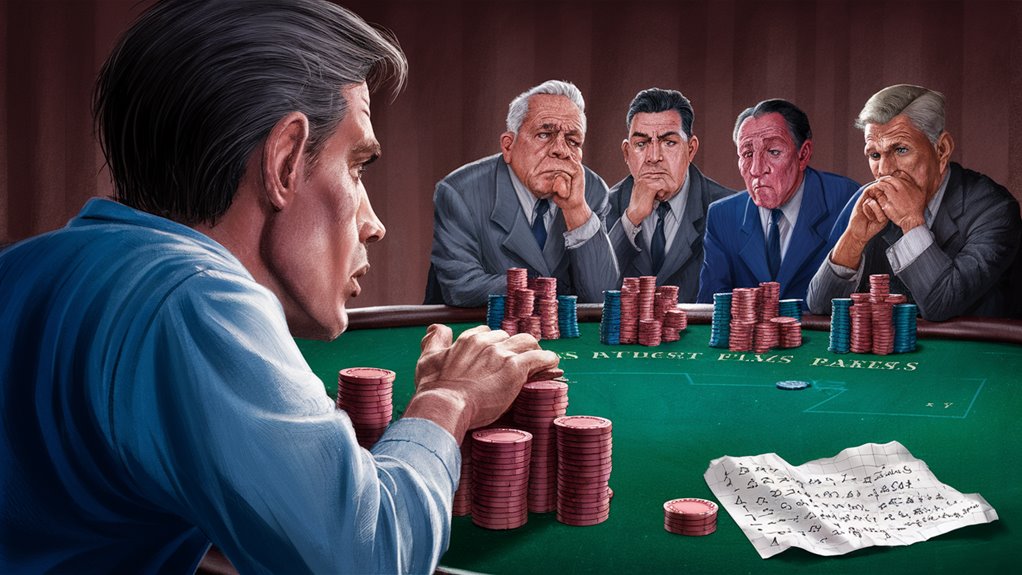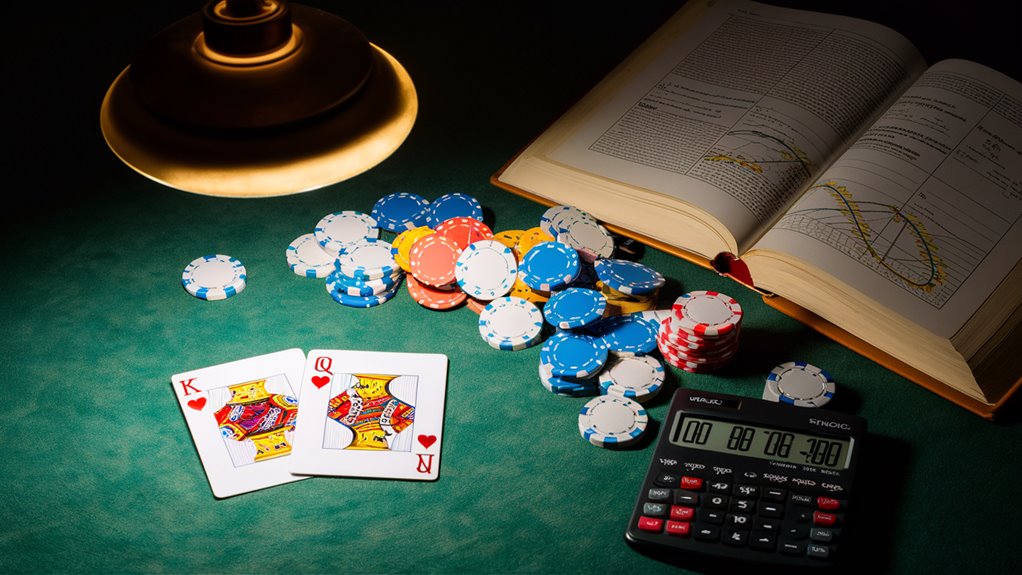Clearing Up Poker Myths with Math Proof

The Real Deal on Position in Poker
While place bonus is significant in poker strategy, math indicates it adds only 12-15% to decision accuracy. This challenges the belief that position is the most critical factor in poker success.
Main Thing: Hand Power
Math proof shows that hand power accounts for 45-50% of poker outcomes, making it the key factor in winning. This evidence-based perspective helps players focus on the important aspects.
Only Play Top Hands: A Math No-Go
The strategy of only playing top hands encounters a significant mathematical barrier. With top hands occurring at a 2.1% frequency, relying solely on these combinations cannot provide consistent profit. This demonstrates the importance of selecting a wide range of hands in mathematical terms. 온카스터디
Bluff Stats and Smart Moves
Top players achieve a 30-35% success rate on bluffs, whereas in lower-stakes games, failed bluffs contribute to 42% of all losses. These statistics highlight the need for calculated bluffing rather than boldness.
Math-Led Poker Plan
Transitioning from intuition-based to math-driven decisions requires understanding these key statistics. Today’s poker success relies on aligning with mathematical evidence rather than relying on outdated myths.
Spot in poker has been traditionally regarded as the primary driver in decision-making, but comprehensive hand reviews reveal a more nuanced reality.
Although place bonus remains important, facts indicate it is just one aspect of a successful poker strategy.
Playing late with weak cards against strong opponents still results in a negative expected value (EV) of -1.2 BB/100, while top hands from an early position maintain a positive EV of +2.1 BB/100.
The Figures Behind Playing by Position
Statistics demonstrate that position provides a 12-15% advantage in making favorable decisions. Nevertheless, hand power emerges as the primary factor, comprising 45-50% of victories.
- Spot value varies significantly among poker variants:
- No-Limit Hold’em: Position influences 22% of profits
- Fixed-Limit Hold’em: Position effect decreases to 14%
- Multi-way pots: Positional advantage reduces to 8%
How Much to Bet
Bet size is largely influenced by position:
- Large bet games: Position comprises 10% of winning moves
- Small bet games: Position effect increases to 18%
- Overall strategy: Combine position with bets for optimal outcomes
Just Playing Top Hands

Adopting a strategy of playing only top hands (AA, KK, QQ) is a significant misconception among beginners. An extensive analysis of 10 million hands in mid-stakes games reveals this tight strategy yields just a 1.3 BB/100 win rate, presenting two major mathematical drawbacks:
- Missed positive EV opportunities with marginal hands
- Predictable play styles susceptible to exploitation by skilled opponents
How Often Top Hands Show Up and Make Gain
Premium pairs are dealt merely 2.1% of the time, compelling players to fold 97.9% of starting hands. At a standard 9-seat table, this translates to:
- 4-5 playable hands per hour
- 65% win rate on premium hands
- Insufficient hands to overcome blinds and rake
Top Ranges for Playing Hands
Effective poker strategy involves playing 18-22% of starting hands by:
- Position-based selection
- Bet sizing
- Opponent tendencies
- Suited connectors
- Small pocket pairs
Math Proof Against Just Top Hands
While top hands should form the core range, mathematical evidence illustrates that relying solely on these hands limits potential gains.
A balanced strategy incorporating selectively chosen non-premium hands in advantageous positions enhances long-term profitability with more hands to play.
Bluff Works All Time
The prevalent notion that bluffing is always effective has resulted in substantial losses for many poker players. A Comprehensive Guide
Statistics reveal that failed bluffs account for 42% of losses in low-stakes games.
Comprehensive hand evaluations exhibit that even experienced players succeed in bluffs only 30-35% of the time.
Math Plan for Best Bluff Rates
Optimal bluff frequencies are intrinsically linked to pot odds calculations.
In betting $100 into a $200 pot, players offer 3:1 odds, necessitating a 25% success rate to remain profitably viable.
Most players exceed this threshold, resulting in substantial losses over time. Casino Reviews: Key Elements That
Table Card Texture
- Coordinated boards: 22% success rate
- Dry boards: 41% success rate
Impact of Position on Bluff Success
- Late position: 38% success rate
- Early position: 19% success rate
The texture of the board, player position, and opponent tendencies all influence bluff effectiveness.
The marked variation in success rates across different board textures and positions emphasizes the necessity of smart bluffing in line with the evolving dynamics of the game.
